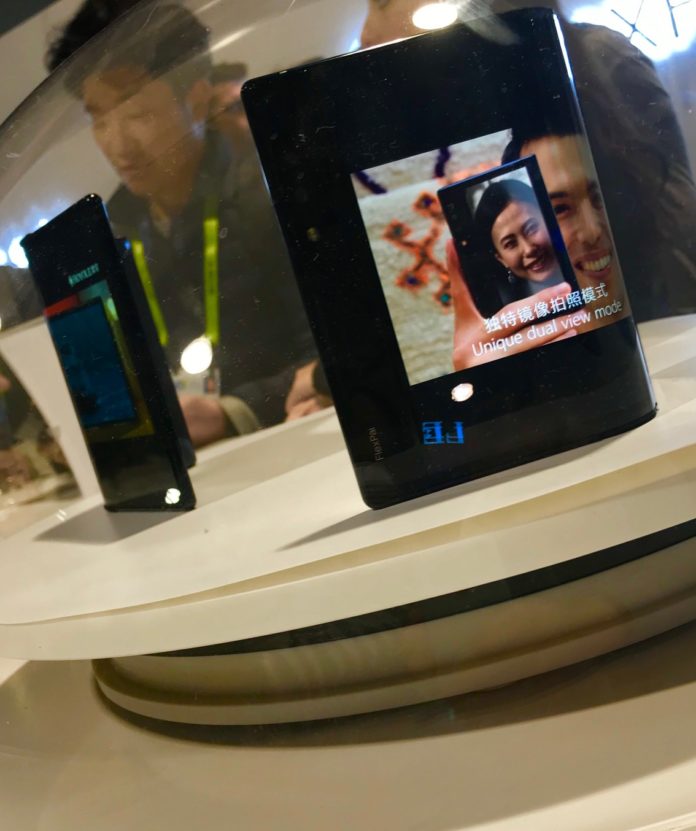By: Guy Tal Hauser
CES is known for being the torchbearer for new tech, a lot of which is vital and impressive. The days-long show is also home to gimmick tech that is fun to play around with and anecdotal at best. The world’s first foldable smartphone, the Royole FlexiPai, is the latter.
The new Royole FlexiPai is definitely foldable and robust, though the functionality of the software and quality of the screen leaves something to be desired. I guess the company wanted to beat Samsung to market, and so forgot or decided not to fix some of the obvious glitches.
Let’s start with what works – the folding mechanism. Now, calling it a smartphone is a bit of a misnomer, or rather, an incomplete description. When the FlexiPai starts out, it’s basically a tablet, measuring 7.8 inches diagonally. When you tire of the big screen and want something that fits in your hand, you fold it in half, and it becomes a phone.
The AMOLED screen is made of a flexible plastic and attaches to a hinge running up and down the back, allowing it to perform its marketed function. It does take a bit of arm strength to fold and unfold, but once you hear the click, you’re good to go.
The Android device includes an auto-detection feature that’s supposed to only show you content on the folded side that you’re currently facing. For some, this doesn’t always work as intended, resulting in the screen going a little haywire with stacked apps and other anomalies.
While it is most definitely a phone when in fold mode, it’s not exactly the kind of slim smartphone you’re used to. It’s a bit bulky and unsexy. I’m not sure how they would make it any different as the folded-out tablet mode is plenty thin. It’s just that when doubled on top of itself, it is no longer that.
The software operates on an OS called Water and seems functional enough, minus the obvious spazz-out when folding. The screen resolution is up to snuff, but some of the models available at CES for handling included some inexcusable color banding.
Despite the issues, the FlexiPai is not a prototype. It’s currently available for purchase in China or for developers in the US. It’ll “only” cost you about $1,300. So, get on that and let us know what you think.
About Guy Tal Hauser
![]() Guy Tal Hauser is a regular tech beat reporter and Videographer for NewsWatch. He lives in Maryland with his wife and loves all things tech.
Guy Tal Hauser is a regular tech beat reporter and Videographer for NewsWatch. He lives in Maryland with his wife and loves all things tech.










